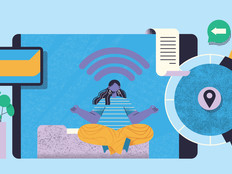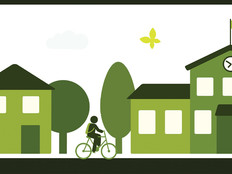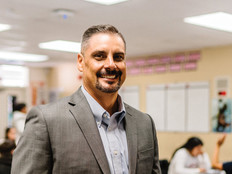Districts Explain How to Make Tech Accessible After School
Digital equity and access, the pursuit of high-speed broadband internet for K–12 students in school and at home — no matter their socioeconomic status — has become today’s civil rights issue.
In fact, only 3 percent of teachers in high-poverty schools reveal that their students have the digital tools necessary to complete homework assignments, compared to 52 percent of teachers in more affluent schools, according to the Consortium of School Networking (CoSN).
At the CoSN annual conference, stakeholders across the education industry came together with the intention to highlight what schools are doing nationwide to provide internet access and Wi-Fi to students who need it.
Five million U.S. families with school-aged children do not have broadband access at home, reports the Pew Research Center. However, 70 percent of teachers assign homework that requires web access, according to a report by the Federal Communications Commission’s Broadband Task Force.
Discussion around the challenge of how to solve the homework gap infiltrated CoSN, from plenary sessions and workshops to a symposium on global competencies.
In July 2016, CoSN spearheaded the Digital Equity Action Agenda, which, among other things, included a unique challenge calling for school districts worldwide to submit videos sharing how they are addressing this 21st-century challenge. Students were instructed to make videos explaining what digital equity is, how it can change the world and how their districts are addressing the problem.
“This is a great way to empower students and allow them to tell their story,” said Diane Doersch, chief technology officer at Green Bay Area Public School District and a co-chair for CoSN’s Digital Equity Educator Advisory Panel.
The winners, seventh and eighth graders at Rancho Minerva Middle School in Vista, Calif., attacked the challenge with gusto and beat out 50 other competing school groups with their video.
“The Vista Unified School District superintendent emailed the kids and asked them to do the CoSN digital equity challenge,” said Beth Duncan, a digital storytelling teacher at Rancho Minerva, who was joined by Odalis Ramirez and Sinai Sanchez, students who have been producing a news show in her video production class. “A lot of what they did was at home, independent of school. It is pretty amazing when you give kids the opportunity and the challenge, what they will do.”
Rancho Minerva is one of 46 schools chosen by Verizon’s Digital Promise between 2014 and 2016 to represent the varied demographics, geographies and resources of American public education in an effort to close the digital divide. Vista is the fifth-largest district in San Diego County with approximately 23,000 students. Sixty percent of those students are Hispanic, and 6,000 of that 60 percent are learning English as a second language (ESL).
Ramirez, Sanchez and their team learned that many students in Vista were under-connected, meaning they had mobile-only internet access or inconsistent connectivity. Their video explains how the district used BatchGeo to map out free Wi-Fi hotspots throughout the city and find places where students can study after school hours near where they reside. They also worked with parents and grandparents to teach them how to effectively use digital tools like search engines, email and apps.
Partnerships Help Expand Access
“We need to expunge the concept that equity means giving everybody the same thing,” said Shawn Rubin, CEO of the Highlander Institute during his main-stage spotlight session titled “Learners at the Center: A Change Management Process for Personalized Learning.”
Such was the case for Kansas City Public Schools. One of the final speakers of CoSN, Mark Bedell, superintendent of KCPS, told the story of how former administrators moved quickly to set up a one-to-one device program in the district but failed to account for the fact that 70 percent of students did not have internet at home. So, despite having devices, the situation was still inequitable.
“Opportunity gaps are created by adults. We had put them in this position,” said Bedell after passionately describing conversations he had with students, who explained how they had to come to school two hours early or stay late in parking lots to complete homework. “We didn’t think through all of the steps. So we went back to the drawing board.”
KCPS is trying to fix this problem by leveraging partnerships with public- and private-sector agencies. For one, they are now working with The 1 Million Project, an 11-market pilot to close the homework gap for 1 million low-income high school students who lack home internet access. The district is also looking into how to deliver Wi-Fi through the transit authority.
The KCPS district has the highest ESL population in the state of Missouri. So, Bedell’s team is working with the Mexican consulate to open one school building from 5-9 p.m. so that anyone, any age can come in and receive a certificate equivalent to a high school diploma in Mexico. Getting ESL parents and grandparents up to speed with technology will help them be better advocates for their children, he said.
“My job is to add value to the lives of children wherever they are,” said Bedell in the closing plenary session: “Inventing an Accessible Future for All.” “We want to take all excuses off the table about why our students can’t achieve or succeed.”
EdTech covered CoSN 2017, including articles on spotlight sessions, keynotes and the pulse on social media. Catch all of our coverage by visiting our CoSN 2017 conference page.









